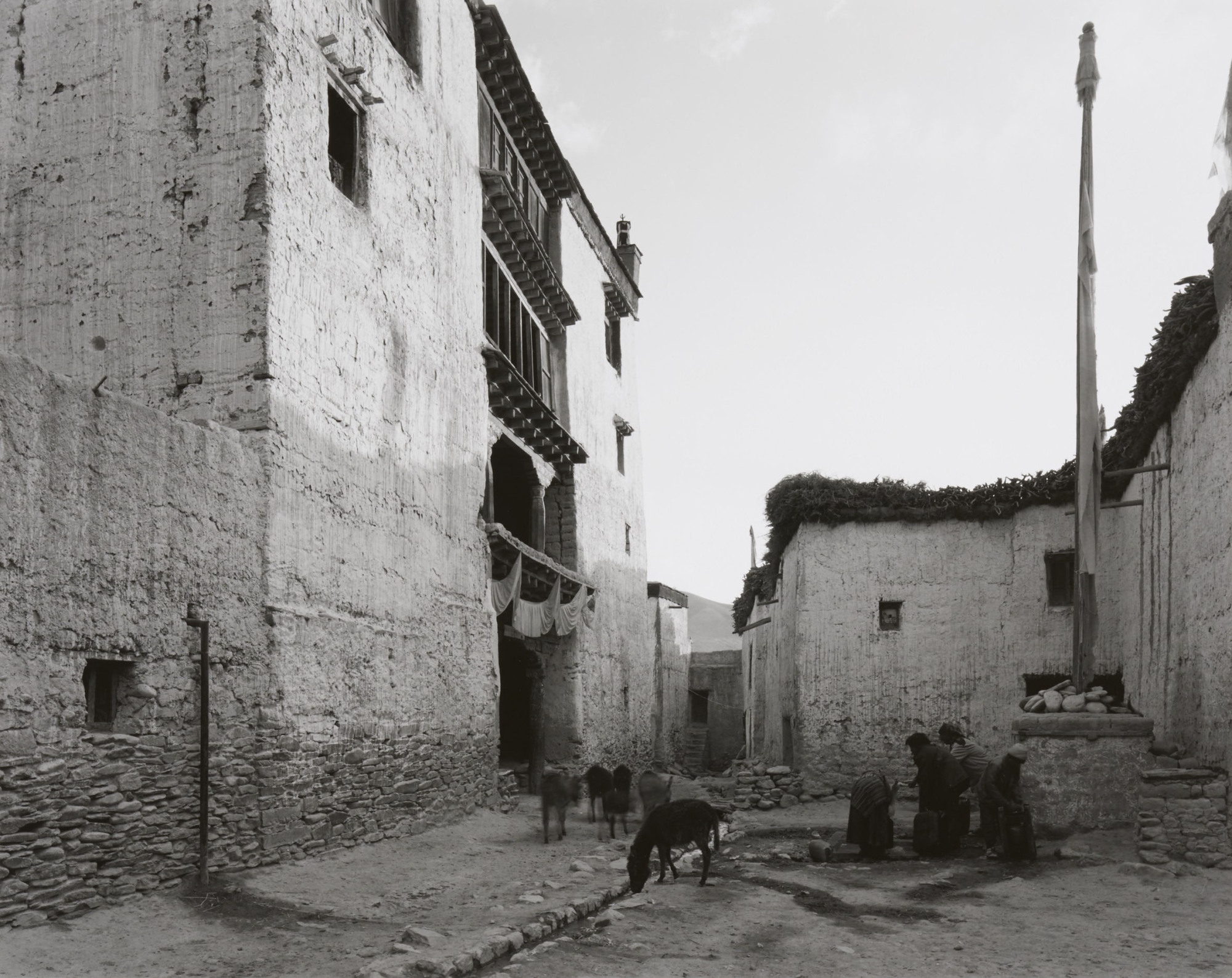Ryuji Miyamoto's well-known monochrome photographs of Kowloon Walled City, Kobe after the Great Hanshin Earthquake, homeless cardboard shelters and the derelict Expo' 85 pavilion in Tsukuba are not on show in the Tokyo Photographic Art Museum (TOP) exhibition "Invisible Land." As these images are responsible for Miyamoto being a major figure in contemporary art photography, their absence is conspicuous.
From the artist's point of view, this might have been a case of not wanting to roll out the same work over and over again, however loved it may be. From a curatorial point of view, as stated in her catalogue essay, Satomi Fujimura wanted to deal with "work that cannot be encompassed merely by the word 'ruins.'" This position makes more sense in Japanese, where the word "haikyo" may have been overused in relation to Miyamoto's work, but for which the English word "ruins" is not necessarily an accurate translation.
In the "Lo Manthang 1996" series of an ancient walled city in Nepal, the sight of traditionally garbed figures in the landscape uncomfortably recalls 19th-century colonial and orientalist photography. In Miyamoto's better-known works, contrasts of light and deep shadow are partially mitigated by careful attention to exposure, film processing and printing, but in this project the darkness of the shadows often blocks off significant portions of the image much more harshly.



















With your current subscription plan you can comment on stories. However, before writing your first comment, please create a display name in the Profile section of your subscriber account page.